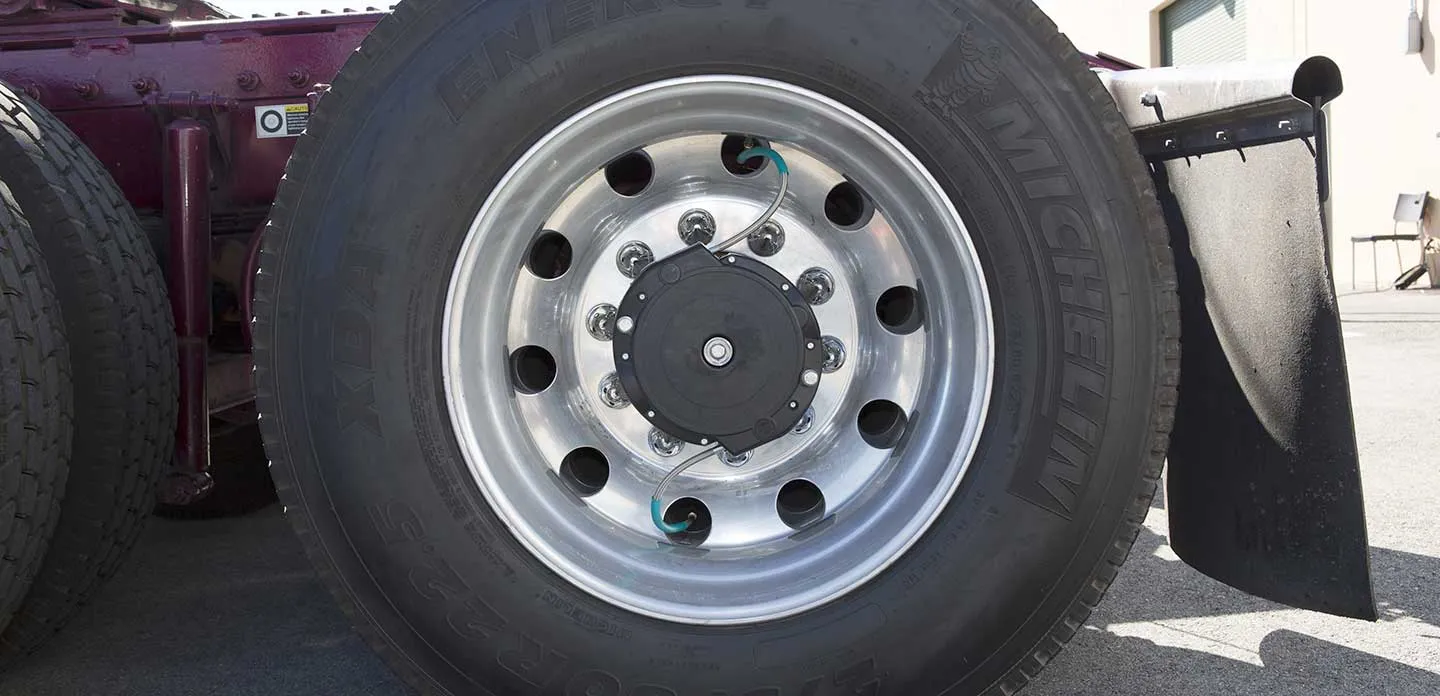Over half of the commercial trucks on the road travel on underinflated tires, and roughly 10 percent of them have tires that are down by 20 psi or more. Tire underinflation is an ongoing problem in the trucking industry, increasing costs related to lower gas mileage, frequent tire replacements, blowouts, and maintenance by an average of more than $1,800 per truck annually. Aperia Technologies intends to eliminate trucking costs related to tire underinflation, including unnecessary energy consumption and creation of preventable tire waste, through the development of its Halo® Tire Inflator system.
Aperia Technologies was founded by Chief Executive Officer Josh Carter and Chief Technology Officer Brandon Richardson. The two entrepreneurially minded engineers with backgrounds in automotive, aerospace, automated-machinery, and medical device product development met at Stanford University while pursuing master’s degrees in mechanical engineering design methodology and energy systems. “In grad school, we were looking for an interesting project and zeroed in on tire underinflation as a significant issue for commercial trucking fleets,” Richardson recalls. “Once we understood the size of the problem, we saw an opportunity to start a business.”
The pair launched Aperia Technologies in 2010, and immediately began work on the proof-of-concept prototype for the Halo, which utilizes the wheel’s rotational motion to maintain optimal tire pressure. The device installs over an existing wheel hub. By automatically maintaining the correct tire pressure, the Halo increases fuel efficiency; extends tire life; reduces blowouts; reduces tire maintenance; and cuts oil consumption, emissions, and waste.
While the company began its work using another CAD software, it soon decided it had to move to a better development platform. “We experienced difficulty recruiting designers and engineers,” Richardson recounts. “Most of the people we wanted already knew how to use SOLIDWORKS software. We also were more comfortable with the robustness of SOLIDWORKS integrated tools and the stability of the platform.”
In July 2011, Aperia switched to integrated SOLIDWORKS product development solutions, implementing SOLIDWORKS Premium design, SOLIDWORKS Simulation Premium analysis, SOLIDWORKS Flow Simulation computational fluid dynamics (CFD) analysis, SOLIDWORKS Plastics Professional injectionmolding simulation and analysis, and SOLIDWORKS Composer technical communication software.
“Moving to SOLIDWORKS enabled us to ramp up development, which allowed us to get product on the road more quickly,” Richardson says. “With more than 90 percent of development completed in SOLIDWORKS, we are scheduled to introduce the product commercially in 2014.”
